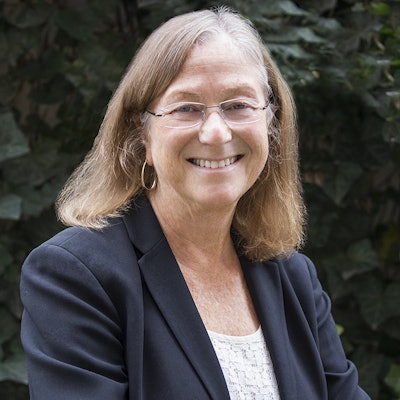As New Yorker Sabrina Calazans sees it, her circumstances are a prime example of what’s fueling the campaign to cancel some, if not all, student loan debt. Since exiting Pennsylvania’s Arcadia College in 2019 with $43,000 in student loan debt and a bachelor’s degree in international studies, Calazans mainly has worked a series of summer camp and $15-an-hour temp jobs.
 Sabrina Calazans
Sabrina Calazans“It’s not that I don’t want to pay this bill, it’s that I can’t afford to,” says Calazans, who in early April became a $20-an-hour, part-time organizer for Student Debt Crisis, a national organization.
“And my situation is not unique,” she adds. “There are millions of people in a similar place, including people who are too ashamed to talk about it.”
Calazans shared a similar message with U.S. Secretary of Education Dr. Miguel Cardona, NAACP CEO President Derrick Johnson and U.S. Sens. Chuck Schumer (D-NY) and Elizabeth Warren (D-NH) during a recent online chat. Also in that private conversation were three other indebted college grads who, like Calazans, are tracking how the nation’s lawmakers will decide whether, how much and for whom student loan debt might be wiped out.
President Joe Biden’s administration has proposed canceling the first $10,000 of every borrower’s debt. Warren and Schumer are urging the administration to forgive up to $50,000.
Those proposals come amid a White House extension, through at least September 2021, of a pre-existing coronavirus-prompted emergency suspension of student loan repayments. They also come as observers across the political and policy spectrum calculate the costs of debt cancellation.
A question of capacity
Forgiving $10,000 per borrower amounts to canceling $350 billion in debts “immediately, in the first year of this,” says Terry Hartle, senior vice president at the American Council on Education. “To put that in context, that’s roughly the amount of money it would cost to double the Pell Grant program for the next ten years. If money is limited, what would you rather do?”
It’s not clear, Hartle adds, whether the White House or Congress has debt cancellation authority. For now, the Biden administration has said it has no constitutional power to act on its own, even though politicians on the left are encouraging Biden to act solo.
“This is a multifaceted, complex issue that policymakers and policy analysts have been wrestling with for years,” Hartle says, explaining that it can take Congress up to two years to promulgate new regulations.
The debt-relief proposals being floated, he adds, “would only help people currently repaying, not the person who graduates next year. This is a massive social problem, with economic and political dimensions. A lot of very good people [have been] wrestling with how to fix it for years.”
Where to draw the line?
Hartle is among those raising what they say are several obvious, unanswered questions: If debt forgiveness becomes a long-term endeavor, how does such a program financially sustain itself? Even in the short-term, as a one-time fix, which borrowers legitimately need this sort of assistance?
“Reducing the debt and reducing the hardship caused by student loan debt are two very different things,” says Dr. Sandy Baum, senior fellow at the Urban Institute’s Center on Education Data and Policy. “A small share of borrowers hold a very large share of the debt. Most of them went to graduate school, most all have a bachelor’s degree.”
Most all graduates work or eventually will be employed in well-paying jobs, she added. “That is not undue hardship.”
 Dr. Sandy Baum
Dr. Sandy BaumTrue hardship cases involve, say, college dropouts owing thousands still but working for sub-par wages or having no job at all, Baum said. “That’s a third of borrowers. They were in school for a short period of time. They may have gotten kicked out of school because they failed to verify their income annually. … If you borrowed $10,000 and there’s no way for you to make payments, it shouldn’t take 20 years to have that forgiven. You shouldn’t have that hanging over your head.”
Neither congressional leaders nor the White House have made it plain to the public that they’ve dug into those kinds of details.
Baum says of the Biden administration: “We don’t know what they’re going to do. They’re obviously under a lot of pressure to [cancel] a certain amount of debt. But there is reasonable resistance” to debt cancellation for everyone. “We don’t want the White House alone to be giving away hundreds of billions of dollars,” she says.
That resistance includes lawmakers from both major parties and, according to some polls, more than half of the American public.
Nevertheless, says Student Debt Crisis Executive Director Natalie Abrams, the need for relief is dire.
Even amid the repayment moratorium, nine million of the nation’s roughly 43 million borrowers received reprieve because they got loans under a different set of protocols than current lending rules.
“We talk to borrowers with older types of loans who do not qualify for COVID relief. We hear from disabled Americans,” says Abrams. “There are so many people who don’t feel they have a voice in this movement. We support broad-based, permanent relief.”
“One of the biggest misconceptions of this,” adds Student Debt Crisis Director of Programs Cody Hounanian, “sets this up as an adversarial thing, where there are people who want debt relief and people without debt who oppose it. … More broadly, though, the American public understands that this debt is a burden on the economy, their friends and neighbors. Most do get that this is a crisis.”
The path forward
The Student Debt Crisis’ #CancelStudentDebt campaign urges a far-reaching initiative that involves broad debt erasure but, as much as that, free college for everyone who wants to enroll and an examination of college costs.
In a decades-long trend, those costs have outpaced overall inflation. Data from the federal Department of Education’s National Center for Education Statistics show that, between the 1985-86 and 2017-18 academic years, the average cost of going to a four-year college or university rose at twice the rate of inflation and the cost of the two-year college rose at a rate that was a third faster than the inflation rate.
Indeed, observers contend, more focus might be placed there, especially at a time when declining state revenues have prompted a series of cuts to public colleges and universities.
Meanwhile, according to Hartle and Baum, there are some practical, perhaps more ready, fixes to longstanding problems in the student loan program. One option is creating a single, standardized repayment option to replace what now are seven separate, sometimes confusing, loan repayment options. Because of the confusion baked into the current system, financially troubled borrowers can be left at the whim of loan-servicers. A second option is to consider basing repayment amounts and timetables on income, rather than loan amounts, which is what several other countries do.
When the repayment moratorium ends this fall, Calazans will resume the $465 monthly she pays on $29,000 of her $43,000 total debt that was covered by the emergency suspension. Throughout the pandemic, she’s continued paying the $160 a month required on the rest of her combination of private and federal loans.
Her parents, with whom she lives, have helped her with those repayments. Calazans hopes that, someday, after her salary prospects have improved, she can manage her debt on her own.
“I’d considered taking a job with one [non-governmental organization] that was out of state. But the salary was too low for me to cover my loans and pay rent. … And the $43,000 that I owe is more than my parents make in a year,” says Calzans, whose mother is a domestic worker and father is a factory worker.
“There are so many factors involved in this problem of student loan debt, which disproportionately affects some communities over others,” she says. “I live that reality and see it among other borrowers.”
This article originally appeared in the May 27, 2021 edition of Diverse. Read it here.















